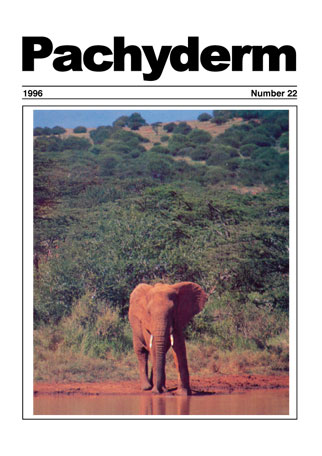Elephants of the Masai Mara, Kenya: seasonal habitat selection and group size patterns
DOI:
https://doi.org/10.69649/pachyderm.v22i1.854Abstract
Habitat selection and group formation in Masai Mara National Reserve fits the general pattern observed in other African populations. Both sexes preferred habitat types with large quantities of nutritious grasses during the wet season and both tended to select browse vegetation in the dry season. The larger average group size in the wet season were not the result of random aggregations but rather the result of bull joining cow-calf herds for breeding. The formation of larger groups in the wet season, when food is not limited, probably allows elephants to interact, to determine dominance hierachies and to re-establish bonds. During the early 1990s the elephant population in the area stands at about 1,500 animals.
Downloads
Published
How to Cite
Issue
Section
License
Copyright (c) 1996 Holly T. Dublin

This work is licensed under a Creative Commons Attribution-NonCommercial 4.0 International License.




